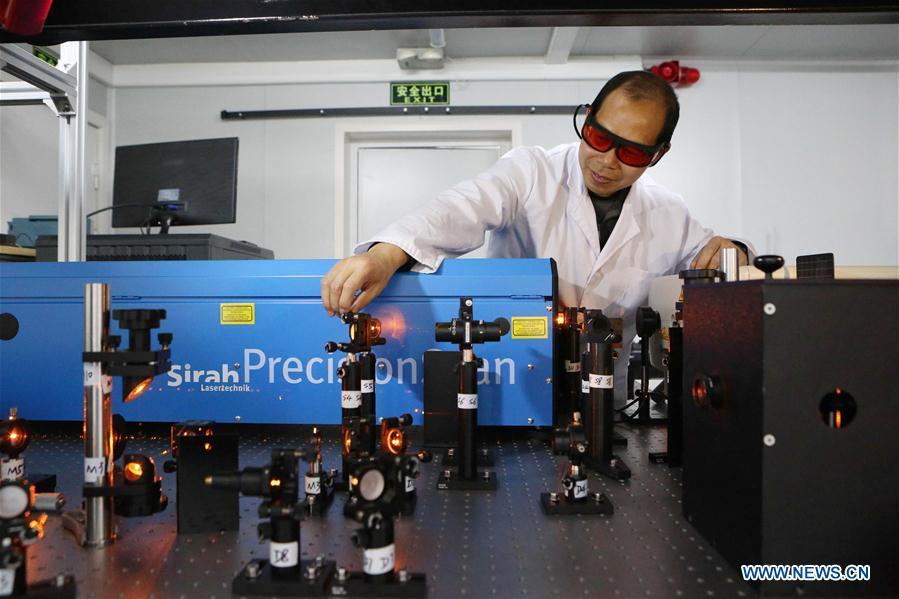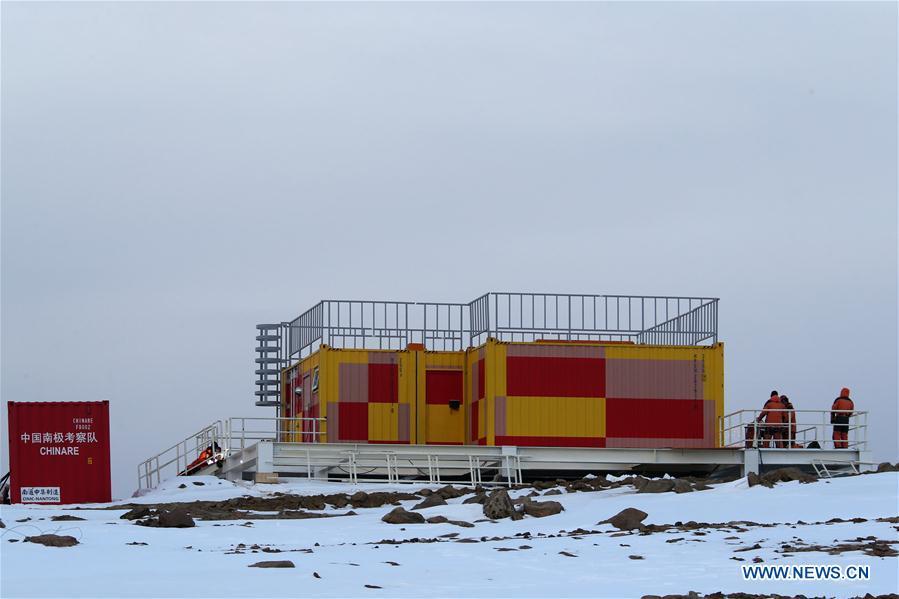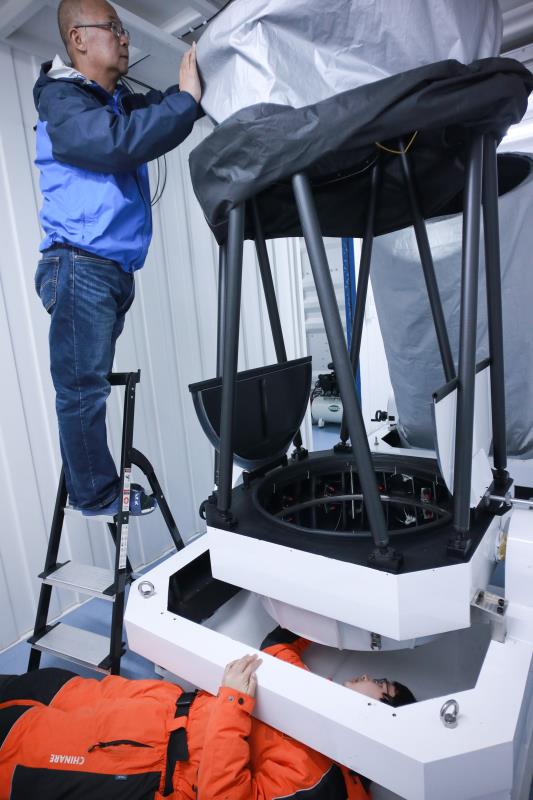
Huang Wentao, head of a fluorescence Doppler lidar system installation project and a member of China's 35th research mission in Antarctica, adjusts equipments at the Zhongshan Station, a Chinese research base in Antarctica, Feb. 11, 2019. Chinese researchers have installed and tested a fluorescence Doppler lidar system at a research base in Antarctica during a mission that was just concluded last week and are now heading home. The system run at Zhongshan Station had enabled them to simultaneously observe the temperature and the three-dimensional wind field in the atmospheric region mesopause above Antarctica, exploring the middle and upper atmosphere of the polar cusp region. (Xinhua/Liu Shiping)

Members of China's 35th research mission in Antarctica check data of a fluorescence Doppler lidar system at the Zhongshan Station, a Chinese research base in Antarctica, Feb. 11, 2019. Chinese researchers have installed and tested a fluorescence Doppler lidar system at a research base in Antarctica during a mission that was just concluded last week and are now heading home. The system run at Zhongshan Station had enabled them to simultaneously observe the temperature and the three-dimensional wind field in the atmospheric region mesopause above Antarctica, exploring the middle and upper atmosphere of the polar cusp region. (Xinhua/Liu Shiping)

Photo taken on Feb. 11, 2019 shows the cabin of a fluorescence Doppler lidar system at the Zhongshan Station, a Chinese research base in Antarctica. Chinese researchers have installed and tested a fluorescence Doppler lidar system at a research base in Antarctica during a mission that was just concluded last week and are now heading home. The system run at Zhongshan Station had enabled them to simultaneously observe the temperature and the three-dimensional wind field in the atmospheric region mesopause above Antarctica, exploring the middle and upper atmosphere of the polar cusp region. (Xinhua/Liu Shiping)

A member of China's 35th research mission in Antarctica adjusts a fluorescence Doppler lidar system at the Zhongshan Station, a Chinese research base in Antarctica, Feb. 11, 2019. Chinese researchers have installed and tested a fluorescence Doppler lidar system at a research base in Antarctica during a mission that was just concluded last week and are now heading home. The system run at Zhongshan Station had enabled them to simultaneously observe the temperature and the three-dimensional wind field in the atmospheric region mesopause above Antarctica, exploring the middle and upper atmosphere of the polar cusp region. (Xinhua/Liu Shiping)























